Hello, friends! This post is very long, and it’s all about how to pair flavors. That is, how to know what flavors go together and what foods complement each other, how to combine flavors with spectacular results, why some foods go well together, cultural differences in food pairing, and more.
If understanding the science and art behind pairing flavors, you will love this post, and I hope you learn a lot!
You may also be interested in my post about what it means to “salt to taste,” since salt plays a pretty big role in cooking and baking (or it should).
This post is part of my Fundamental Friday series where I answer cooking and baking questions and discuss techniques. For ease of browsing, you can find all my Fundamental Friday posts in one place. Thanks for being here!
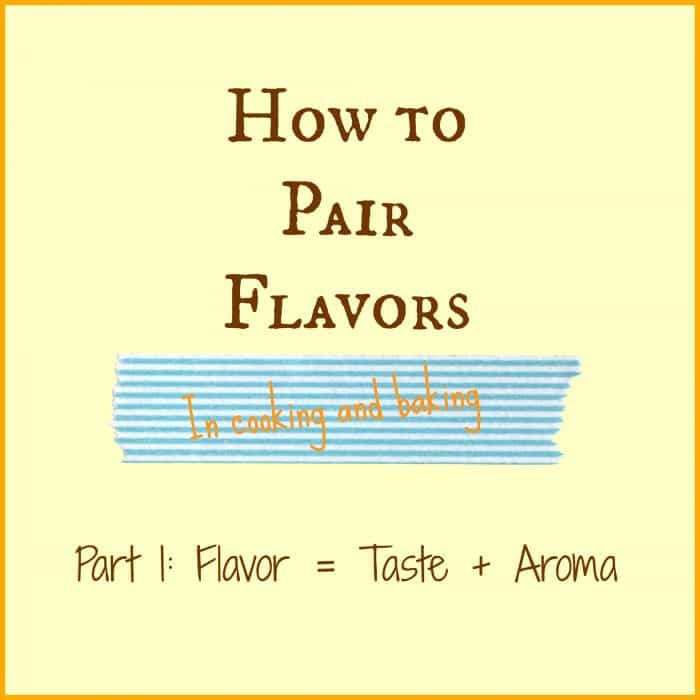
The Question
I have had this post on my mind for some time, now. Thanks to friend, neighbor and reader Roberta for asking:
“How do you know what flavors will go together?”
I’m paraphrasing, but that’s pretty much the gist of it. I’d even broaden this to ask why do some flavors go so well together while others don’t?
Pastry Chef Online Participates in Affiliate Programs. If you make a purchase through one of my links, I may earn a small commission. For more information click to read my disclosure policy
I’m going to try to answer these huge questions in this Very Long Post.
Here’s what we’ll be examining:
- the relationship between taste and flavor
- how I pair flavors without using any outside help such as websites or books. How I learned to pair flavors
- the science of flavor pairing, a look at a site that claims it can pair flavors based on the chemical analysis of foods
- an overview of my favorite flavor pairing book, The Flavor Bible, with a discussion of that book is set up and how to use it to bring an added depth and dimension to your cooking and baking experiments.
Along the way, I’ll highlight some additional recommended reading for those of you who are super interested in the subject of flavor pairing.
Now that you know the game plan, let’s get started.1
The Difference Between Taste and Flavor
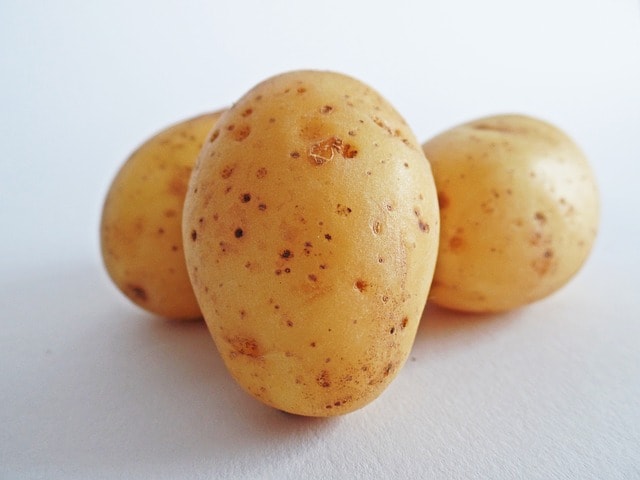
Did your science teacher ever have you do the exercise where you hold your nose and bite into both an apple and an potato?
The idea is that you’re not supposed to be able to tell the difference between them when blindfolded and pinching your nose shut.
The more exact truth is you can still perceive a difference in taste, but you cannot experience the aroma of either food with your nose held shut, so you can’t experience the full flavor of the food.
Put simply, flavor = taste + aroma (plus how the brain processes these stimuli to come up with “how something tastes.” That alone might help to explain all the varied food preferences out there: Tonya hates broccoli. Russell cannot stand carrots, etc.)
Recommended Reading
I found a really excellent article over at CulinaryLore (great site) that addresses taste, aroma and flavor in an accessible way while still sharing a lot of the science. For an in-depth discussion of taste and flavor, read Apples and Potatoes Taste the Same with Your Nose Plugged: Fascinating Fact?
An Experiment You Can Do at Home
It’s interesting that, while I know the sense of smell helps to inform our sense of taste, I never really thought about the distinct difference between taste and flavor until I went to Richmond to tour the Sabra factory.
While there, Sabra’s executive chef, MaryDawn Wright, led us in a hummus tasting.
She directed us to first hold our noses, roll the hummus around on our tongues to help identify all the tastes (sweet, sour, salty, bitter, and umami), and then to let go of our noses and experience the full flavor as the aromas (which are made of tiny, airborne molecules) headed up our nasal passages and hit our sensory receptors in our olfactory system.
With our noses pinched shut, we could still taste the hummus and probably could even identify it as hummus, but there was a marked difference when we let go of our noses.
The taste was enhanced by the aromas and we were able to experience the full flavor of the hummus.
You can do the same thing at home. With hummus or peanut butter, or pretty much any food you have in your fridge or pantry.
- Hold your nose, take a bite, and chew and chew, getting to know the flavor as your tongue experiences it
- Let your nose go, and see the difference it makes when your nose gets in on the action
The Importance of Aroma in Experiencing Flavor
Who hasn’t walked into a home where someone is baking bread and hasn’t inhaled deeply and felt a sense of happy contentment and that all is right with the world?
Or breathed in the heady aroma of soup simmering on the stove and thought of their aunt who always made the best soup?
Or maybe caught a whiff of a particular cologne and were immediately transported to your grandfather’s home even though he has been dead for years?
Our sense of smell, more so than any of our other senses, has the uncanny ability to transport us in time and place.
A specific aroma can trigger vivid memories of specific events. The sense of smell is all wrapped up in memories, emotions, and associations. That’s not just poetic speech either.
In the simplest of terms, the brain processes smells in the olfactory bulb which is closely connected to the areas of the brain that process/store emotions (amygdala) and memories (hippocampus). (Why Smells Can Trigger Strong Memories, Mercola.com, August 6, 2015)
Other Factors that Contribute to our Experience of Flavor
To further complicate matters of taste and flavor, our perception is also influenced by other sensory factors:
- how the food looks
- its mouthfeel
- temperature
- texture
All of these factors play a part in our perception of flavor.
Five Tastes, Infinite Flavors
For the longest time, it was thought that people could taste for distinct tastes: sweet, sour, salty and bitter.
Now umami2 has joined the other four for a grand total of five tastes.
There are only so many ways one can combine five tastes, even considering you may only be looking at two or three tastes at a time.
On the other hand, while nobody has been able to scientifically prove exactly how many smells the human nose can detect, the prevailing wisdom maintains the answer is in the thousands.3
Does Any of This Matter When it Comes to Pairing Flavors?
What do we know so far? Flavor = Taste + Aroma.
Yes, it does matter. You have to take into account not only taste: sweet, sour, salty, bitter, and umami but also the way aromas inform the taste.
That’s why cooks are forever smelling food as they add ingredients.
I’m sure you’ve seen people waving their hands over a steaming pot of something delicious bubbling on the stove, inviting the aromas in, as it were.
As an aside, tempting aromas also stimulate the salivary glands, and you can’t taste anything with a dry tongue.
A “mouthwatering scent” is just that. It triggers the brain to activate saliva production so the food will dissolve in your mouth so you can taste it. No saliva, no dissolving. No dissolving, no tasting.
Back to Flavor Pairings: coming up with harmonious flavor pairings must take into account not only balancing tastes–something sweet with something salty, for instance–but also making sure that the aromas of the different flavors–say marinara sauce and grated Pecorino Romano, for example–blend well.
Pairing nicely contrasting textures and temperatures also has a role to play.
While successful flavor pairing sounds like a daunting task, next, I’ll share with you how you can start to hone your flavor pairing skills, no equipment necessary.
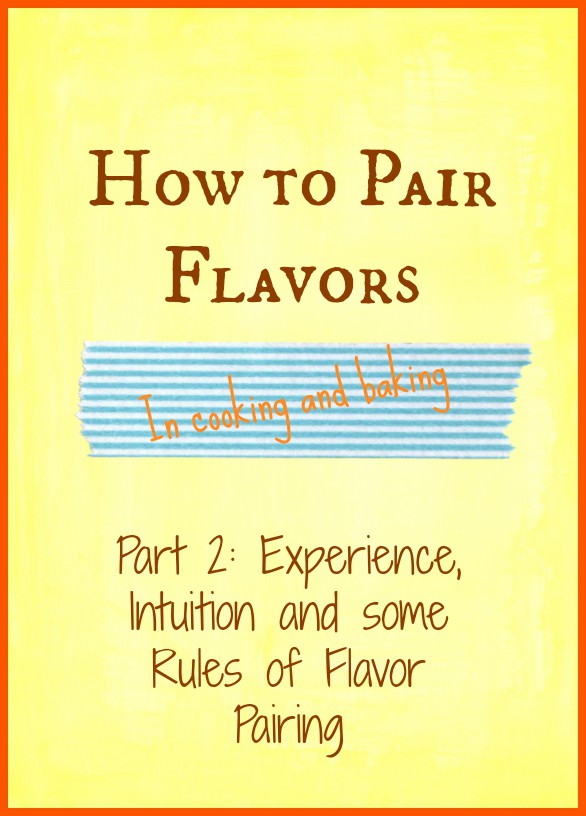
How I Learned to Pair Flavors
Part of learning how to pair flavors just comes from living and eating.
Some foods go together and become iconic:
- a great BLT
- macaroni and cheese
- peanut butter and jelly
- pancakes and maple syrup
- peaches and cream
We learn that blue cheese is great with steak, that a buttery Hollandaise is gorgeous over asparagus or poached eggs and Canadian bacon, that hot fudge sauce on vanilla ice cream is a very good thing.
Why Some Flavors Work So Well Together
- The first step is really to pay attention to why these iconic flavor combinations work so well together. Smoky/sweet/tangy
- neutral bready/sharp
- creamy cheese
- salty, nutty/sweet
- fruity/creamy and on it goes.
There is also texture to consider.
A BLT is a symphony of texture with the crisp chew of bacon, the soft bread, the juicy pop of the tomato and the cold, crisp crunch of the lettuce.
While there is something to be said for soft on soft on soft, a textural contrast can play up an already delicious pairing.
Maybe that’s why I prefer crunchy peanut butter to smooth.
Learning by Eating
We also learn by going out to eat and sort of internalizing the flavor profiles at our favorite Italian or Greek or Indian restaurants.
Speaking in broad generalities, tomato and basil together yell Italy while tomato and cilantro speak of Mexico.
Oregano and lemon is evocative of Greece while oregano and sumac evokes the Middle East.
Cumin and cocoa transport us to Mexico while cumin and coriander take us to India.
From my experiences eating out, I learned, among other things:
- mango and yogurt are perfect together in a mango lassi
- that a drizzle of good balsamic is always welcome with either tomatoes or strawberries
- that blue cheese and butter work magic on steak.
Pay Attention to Classic Pairings in Cultures Other Than Your Own
If you are lucky enough to grow up in a family who celebrates its cultural heritage with food, you will learn the basic building blocks of the cuisine of your People without going to restaurants.
I grew up in a household where Lawry’s Seasoned Salt was about the most exotic spice blend we had, but my dad’s folks (and Auntie Ev) came from England, and I did get to experience one of the British pairing rules at Easter:
lamb and mint jelly or mint sauce.
It may sound weird, but lamb can be pretty fatty and have a heavy mouthfeel.
The mint lightens it up with a cooling sensation and sort of…dilutes…the fattiness almost in the same way that jelly can cut the fattiness of peanut butter. Think about it. Peanut butter sticks to the roof of your mouth, but not so much peanut butter and jelly, right?
Learn What Flavors Go Together At the Mall or the Grocery Store
Even at the mall you can learn that butter and cinnamon pair beautifully with cream cheese frosting, that butter and popcorn are great friends, that a pickle spear is just the thing to crunch along side a soft and melty grilled cheese sandwich.
How about at the grocery store?
How many different ways have you seen orange and cream paired together?
- Creamsicles
- dreamsicles
- Orange Julius
- Orange & Cream Life Savers
- chewy caramel orange candies
- orange panna cotta.
How about tomatoes and cheese?
- Greek salad
- pizza
- tomato soup and grilled cheese
- Caprese salad
- BLTC sandwich
- manicotti
- mozzarella sticks
- etc
Over time you learn, or someone teaches you, lemon plays nicely with most fruits, as does cinnamon.
Walk down the candy aisle enough times and you know that chocolate and peanut butter is a perfect pairing as are chocolate and caramel, peanuts and caramel, marshmallow and chocolate, coconut and chocolate, orange and chocolate.
Start paying attention to what flavors taste good to you and see if you can figure out why.
And even if you can’t figure out why, remember the combinations. If they work for you, they’re now part of your Flavor Pairing Arsenal. Or toolbox. Whatever you want to call it.
ARE THERE SOME BASIC RULES FOR PAIRING FLAVORS?
Again, most of what I say here is going to be from my experience. I will cite any sources I consult.
I do think there are some universal rules for pairing flavors in food. Even if the flavor profiles of different cuisines vary widely, I think there are some unifying principles at work.
PAIRING BY BALANCING TASTES
We’ve already talked about the different tastes: sweet, salty, sour, bitter and umami.
There are some cuisines in which the philosophy is to add a little of each basic taste to each dish.
In each bite, you’ll get sweet, sour, salty, sour, bitter and umami. If that doesn’t make a lot of sense, consider that, in very simple terms, sweet=sugar, sour=acid, salt=well…salt, bitter=bases/alkaloids, umami=glutamate/savory/meatiness.2
Now think of hot and sour soup. It’s a little bit sweet from the lily bulbs, a little sour from the vinegar, a little salty from the soy sauce, and both bitter and umami from the mushrooms.
When you pair foods based on balancing tastes, you don’t have to go that far to have an excellent pairing though.
Here are some balanced taste pairings along with a few examples:
- Sweet and bitter: Orange and chocolate, cinnamon and coffee, cream and coffee, cabbage and onion.
- Sweet and sour: Honey and lemon, sweetened sour cream, sour cherries and cream, buttermilk pie.
- Umami and sweet: Teriyaki beef jerky, barbecued ribs with St. Louis-style sauce, sweet&sour pork, those little smokies in grape jelly and mustard that you get at holiday parties.
- Salty and sweet: Kettle corn, candied bacon (add umami to that one as well), ice cream with salted caramel sauce, milk chocolate covered pretzels or potato chips, bacon-wrapped dates (ditto, umami).
The balancing of tastes might help to explain why almost everyone loves bacon.
It’s umami-meaty, salty, and sweet all at the same time.
Another food that is almost universally enjoyed is caramel. And talk about balance. Actually making caramel is all about balance. The balance of the sugar with the bitterness brought about by caramelization.
Add a touch of salt (or a lot for “salted caramel) and butter along with some cream and you are in business. The perfect balance of sweet-salty-bitter. Use a cultured butter (European-style), and you can add a hint of sour to that mix as well. Adding a touch of perfect caramel can help to balance out the tastes of many foods, mainly sweet but also savory.
Another Reason to Use Salt
Before I move on, here’s another reason to use salt. I bet you can guess.
Just a tiny amount of salt added to a sweet ingredient helps to balance the taste.
- Add salt to bitter: balance.
- Add salt to sweet: balance.
- Add salt to meaty: balance.
- Add salt to sour: balance.
Salt goes in everything. Or at least I think it should go in everything. Not to excess. Sometimes just a few grains is all you need.
And Don’t Forget Some Acid
The same can be true for a bit of acid, although I don’t think acid is quite as universally useful as salt.
A squeeze of lemon juice can perk up chicken soup while a squeeze of lime brightens guacamole.
When I have added just about as much salt as I think a tomato sauce needs, I may take it the rest of the way home with a shot of lemon juice or vinegar.
PAIRING BY “WEIGHT”
I don’t mean a pound of this and a pound of that.
By weight, I mean the perceived heaviness or lightness of the “feel” of the food.
This is probably definitely a more subjective method of pairing, but it is still valid.
Light or delicate flavors could be overpowered by strong or heavy flavors.
It’s not that you can’t use a light flavor with a heavy one, though. You just want to make sure that the flavors are in balance.
A good example of this would be pears with blue cheese. Pairs are light and juicy while blue cheese is heavy, strong and pungent, and they balance each other beautifully. The key is in the proportion of one to the other.
You wouldn’t want a huge wedge of blue cheese with a dollop of pear butter on top. The cheese would completely overpower the pear.
But in a salad, a few judicious crumbles of blue cheese can serve to snap the delicate flavor of pears into focus.
When pairing by weight, you can go complementary (heavy with heavy or light with light) such as steak and blue cheese or a delicate white fish in a light lemon sauce, respectively.
You can also go the contrasting route: our friends pear and blue cheese (light and heavy), dark chocolate and orange (heavy and light) or that same steak but with Bearnaise instead of blue cheese (Beranaise is lightened with the addition of tarragon which is a bright, springtime flavor).
PAIRING BY TEMPERATURE (REAL OR PERCEIVED) AND MOUTHFEEL
When literally pairing by temperature, you match a hot or warm food with a cold or room temperature food.
- Hot fudge on vanilla ice cream
- cold lettuce and tomato on a hot, juicy cheeseburger
- cold lemon curd on warm gingerbread
All the tastes/flavors do go together, but adding a temperature contrast can add to the overall experience of eating the food.
Also, when foods get warm, their flavor becomes more assertive because cold tends to dampen flavor. Cold foods release fewer “oderants” or flavor compounds so there is less for your nose to smell.
This is part of the reason why cheese has a more complex flavor when it approaches room temperature than it does straight out of the fridge.
It’s also why you make your ice cream base just a bit sweeter than you think it needs to be. The sweetness is dulled when the mixture is frozen.
Perceived Temperature
When talking about temperature, there are certain foods that mimic temperature changes.
Cooling: mint, eucalyptus and menthol.
Hot: chile peppers and ginger.
Even though these foods aren’t cold or hot in temperature, they activate the same receptors that receive cold and hot signals.
Add in one or the other of these perceived temperatures to further enhance your food pairings. For example, a bit of chilli powder is often welcome in chocolates.
And remember the mint jelly/lamb from my childhood? It’s the same thing. The mint offers a cooling counterpoint to the fatty meat.
Another example? Gingerale. Gingerale is hot-seeming and sweet. And bubbly.
What about putting mint in iced tea? Adding perceived cold to real cold can equal super cold, so that’s why tea with mint is so refreshing on a hot day.
Recommended Reading
If you’re interested in the way temperature pairings can enhance a dish, check out my Hot and Cold dessert roundup for examples and ideas.
This very short article that discusses the roles that astringency and fattiness play in balancing flavors is also an interesting read. (NOTE: This article is from the New York Times and is behind a paywall)
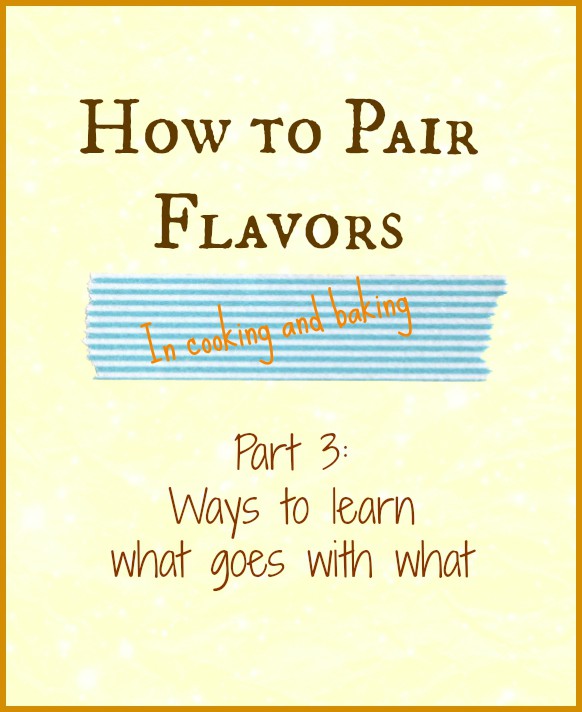
FLAVOR PAIRING: THE SCIENCE…?
While a lot of flavor pairing is sort of intuitive (gee, some hot fudge sauce would taste awesome on this ice cream sundae), many flavor pairings might seem surprising, but somehow they just work.
That’s because they share common volatile molecules. Molecularly, when foods share many of the same compounds, they often taste very good together.
This is the (much simplified by me) science behind the Belgian company FoodPairing. In short, Foodpairing helps you pair foods based on flavor and aroma similarity and then suggests pairings based on a generated algorithm.
For a more detailed explanation of how Foodpairing works, see their article on The Science Behind Foodpairing on their site.
The food pairing theory waters do get muddied up with the development of a flavor network3 by a group from Cambridge University that analyzed a bunch of recipes from the cuisines of North America, Western Europe, East Asia, and Latin America.
This network shows that there are many more shared compounds in North American cuisine as compared to East Asian cuisine.
The group’s conclusion was that the theory of food pairing does not necessarily generalize across cultures. (Flavor Pairings: The Science of Flavor)
If you’d like to play around with an interactive version of the flavor network, your wish is my command: Visit The Flavor Connection.
Flavor Pairing Differences Across Cultures
Indian food, one of my all time favorite cuisines, appears to be the cuisine with the least amount of overlap in flavor compounds.
Reports of this started popping up at the beginning of March of this year, and most of the headlines were some variation of “Why Indian Food Tastes So Awesome.”
Here’s “Scientists Have Figured Out What Makes Indian Food Taste So Delicious” from The Washington Post, March 3, 2015. (This article also references the interactive chart linked above).
I grew up in the US with a decidedly American palate, but the first time I tasted Indian food, I fell in love.
So, even though I’m culturally programmed to enjoy food combinations that share a lot of the same flavor compounds, I also think food that doesn’t have much overlap in flavor compounds is fantastic.
I would bet that a lot of you guys are the same.
So, can both theories–foods that share flavor compounds go together and foods that don’t share flavor compounds go together–be true?
I think it’s possible that they can with a caveat.
Indian cuisine makes use of a melange of spices that not only taste wonderful but can bring a dish made of individual ingredients with few-to-no overlapping flavor compounds into harmony.
Maybe the rule should be that foods that share many of the same flavor compounds taste good together, but the judicious use of spices can also “force” ingredients with no common flavor elements to play nicely together.
Thomas Keller Weighs In
Thomas Keller, arguably one of the most influential chefs in America, wrote a wonderful piece on pairing flavors for Esquire magazine back in 2013.
What I love about this particular article is that he simplifies flavor pairing, making the concept approachable and easy to understand.
Leave it to a guy with an incredibly sophisticated palate to bring it back to basics.
Flavor pairing is all about learning what goes with what and can be a very personal exercise that is informed both by your background and your experiences.
The article is short (3 paragraphs) and it ends with six almost universally loved pairings that should get your creative juices flowing.
WHAT IS THE BEST WAY TO PAIR FLAVORS?
I think the best way to pair flavors, or learn to pair flavors, is to go partly by your intuition and partly with the science or the experience of others.
Our own experiences only take us so far, especially if we have not traveled extensively or frequented a ton of “ethnic” restaurants where we live.
How do you expand your flavor pairing horizons without jetting off to the four corners of the world?
There are plenty of online resources for learning to pair flavors.
Online Resources
If you want to go the strictly scientific way, you can sign up for free Foodpairing account that gives you access to a limited (but still substantial) number of foods and beverages for pairing purposes.
There is plenty there to get you started, but be aware they will gently suggest you upgrade to a paid account to gain access to more ingredients.
To get an overview of what herbs pair well with what foods, use this chart for Pairing and Combining Fresh-Grown Herbs at Home (of course the rules hold true if you buy these fresh herbs rather than growing them, too).
For spice and food pairings, Spice Advice has also put together a chart** of pairings for quite a few commonly available spices here: Spice Usage Tips.
MY BEST BOOK RECOMMENDATION: THE FLAVOR BIBLE

One of the most useful flavor pairing guides I know is The Flavor Bible (2008) by Karen Page and Andrew Dornenburg.
There is now a companion book called The Vegetarian Flavor Bible (2014) by Karen Page with photographs by Andrew Dornenburg.
These books are not cookbooks. There are a few recipes scattered throughout, but by and large, The Flavor Bible gives us a little bit of excellent information about “The Language of Food” as relates to flavor and “Communicating Via the Language of Food.”
The Vegetarian Flavor Bible contains short chapters on “Vegetarianism Throughout the Ages” and “Creating a New, Compassionate Cuisine.”
The bulk of both books (over 300 pages in The Flavor Bible) are given over to “The Charts” which delve deep into “flavor matchmaking.”
The idea here is that you can look up whatever inspires you to start cooking, be it a main seasonal ingredient, a spice, a cuisine, a cooking method, or just a desire to spread your culinary wings a bit, and start there.
You can look up “autumn” for a start, or you can look up “bell peppers,” or “black pepper” and find pairing insights from herbs to spices to preferred cooking methods or even pairings to avoid.
It boggles my mind, but Page and Dornenburg pretty much:
- traveled all of North America interviewing dozens of amazing chefs and cooks
- looked at a squizillion recipes online
- perused heaven only knows how many menus to
compile a dizzying alphabetical listing of almost every ingredient and cuisine imaginable along with all the pairings from tried and true almost universal ones (strawberry and balsamic, peach and nutmeg, beef and blue cheese, etc) down to intriguing pairings they maybe only heard of a time or two but whose exclusion would have been a huge oversight.
I can 100% vouch for the usefulness and comprehensive reach of The Flavor Bible.
You may find yourself starting by relying heavily on it and then later, once you are more comfortable and familiar with flavor pairing, you might only turn to the book to find an unexpected element to breathe new life into an old standard.
This is exactly what I did when developing my Fig Jam with Vanilla and Black Pepper and my Savory Grape Bread recipes.
No matter how you use these books, I can almost guarantee that, whether you’re a novice cook with a very elementary knowledge of pairing or an expert gourmet with a well-developed palate, you will be able to bring more balance, complexity and sophistication to your cooking and baking.
PEOPLE WHO WILL NOT LIKE THE FLAVOR BIBLE
As much as I love this book (and would probably love the companion volume as well), not all books are for all people. Read on to find out whether or not The Flavor Bible is going to be a good fit for you.
- If you are looking for a cookbook, keep looking. Neither of these books is going to delve deeply, if at all, into the cooking process or how to prepare dishes.
- If you do not already have a good handle on the basics of cooking, these books will not help you. To give you an example, this is all the information given for “Cabbage–In General” before the list of possible pairings: Season: autumn-winter Botanical relatives: broccoli, Brussels sprouts, cauliflower, collard greens, kale, kohlrabi Function: cooling Weight: medium Volume: moderate Techniques: boil, braise, raw, saute, steam, stir-fry —The Flavor Bible, p89 For someone who is already a chef or an experienced cook, this information is all they need. Others may need more guidance.
- If you want an explanation of why chefs chose each particular flavor pairing, you will be sorely disappointed. There are a few sidebars and notes scattered throughout the books that do elaborate a bit on certain pairings, but this is the exception and not the rule. If you want to find out the “whys” behind the pairings, prepare to Google “Why do X and Y taste good together?” or something along those lines.
- If you are keen to explore Asian and Indian flavor pairings, move along. While there are some “non-North American” pairings in The Flavor Bible (and I assume the vegetarian version as well), these lists were compiled by interviewing North American chefs, and remember the rules for pairing flavors in North America differ from the rules in other parts of the world.
Conslusion
In conclusion, we all have the ability to pair flavors.
Anyone who has intuitively spread peanut butter on an apple slice or crumbled some feta cheese to go with watermelon (or sprinkled salt on watermelon) or think a Monte Cristo sandwich is a thing of perfect beauty already knows how to pair flavors.
Nobody is born knowing how to pair All The Flavors, and it’s not a race.
Use your own experiences, both from eating at home and eating out, and pay attention.
To further expand your horizons, there are plenty of resources available, both online (free and paid) as well as comprehensive books.
Keep learning. Keep eating. Keep cooking.
Your flavor pairing vocabulary will expand, I promise.
References
1There still seems to be some question among lay people about umami, but it has been scientifically documented as being the taste of MSG and other glutamates
2The Smell Report, SIRC, date unknown
How Many Different Smells Can the Human Nose Actually Detect?, Gizmodo, 7/07/2015
3Link to the original food network article, Flavor Network and the Principles of Food Pairing from the journal Nature.
It will help me and other readers so much if you take a moment to rate and leave a review for this recipe.
You can use the stars to rate 1-5 (5 is best), and leave a review in the comments. It helps me make adjustments if any are needed, and comments help others decide whether the recipe is worth making.
Other ways to share include pinning, and/or sharing on your favorite social media platform.
Thank you so much for taking the time!


Hi, y’all! I hope you’ve enjoyed this post and hopefully also learned a thing or two.
If you like my style, I invite you to sign up for my occasional newsletter, The Inbox Pastry Chef.
Expect updates on new and tasty recipes as well as a bit of behind-the-scenes action. I hope to see you there!

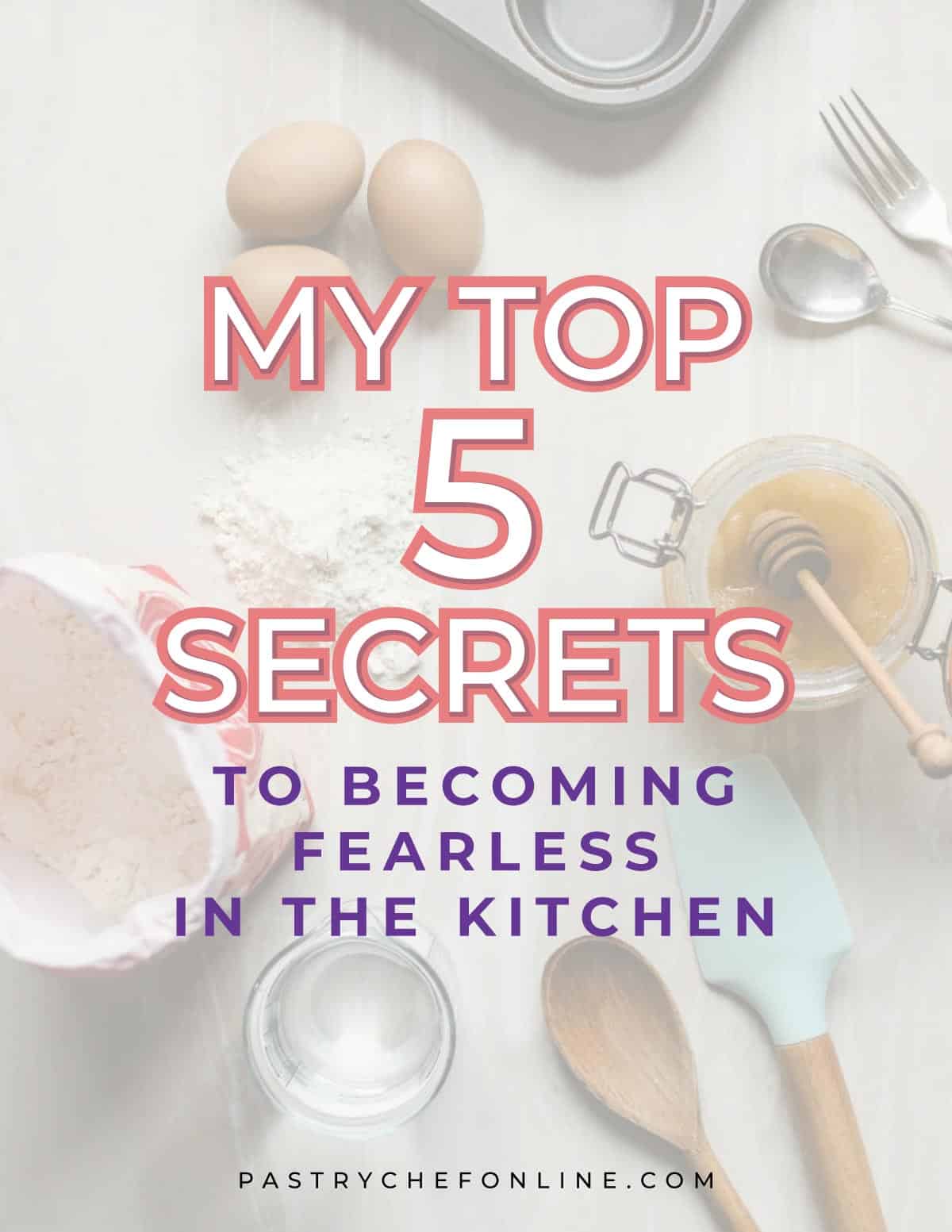
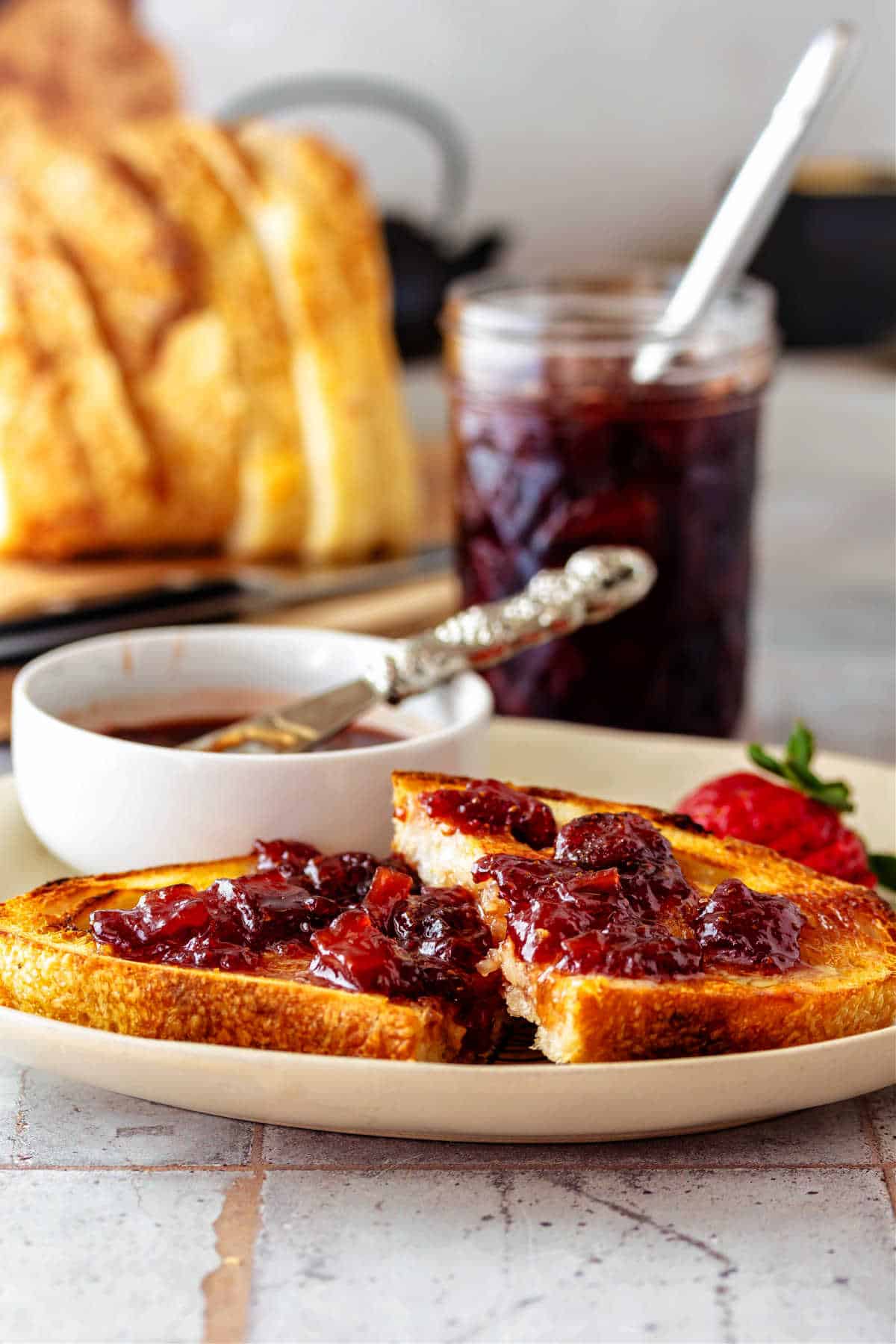
Join in Today!

Thank you so much for taking the time to share this. I thoroughly enjoyed it. I love to cook and I love to eat. And, now that I am retired I have time for both 🙂
You are very welcome, Sherrie. I really hope non-recipe posts like this help to demystify cooking and baking, giving everyone “permission” to have fun in the kitchen! Happy retirement!
Interesting topic, Jenni, and kudos to you for tackling it! What is interesting is why some people love certain pairings and others do not. But as I create jam flavors, this is always on my mind. Can’t wait to read the next installment!
Aw, thank you so much for reading it, Jamie! I wasn’t sure anyone was brave enough to, but I do hope people find it useful. Thank you so much for sharing it–I’m surprised yet honored you had the time to read it! xoxo